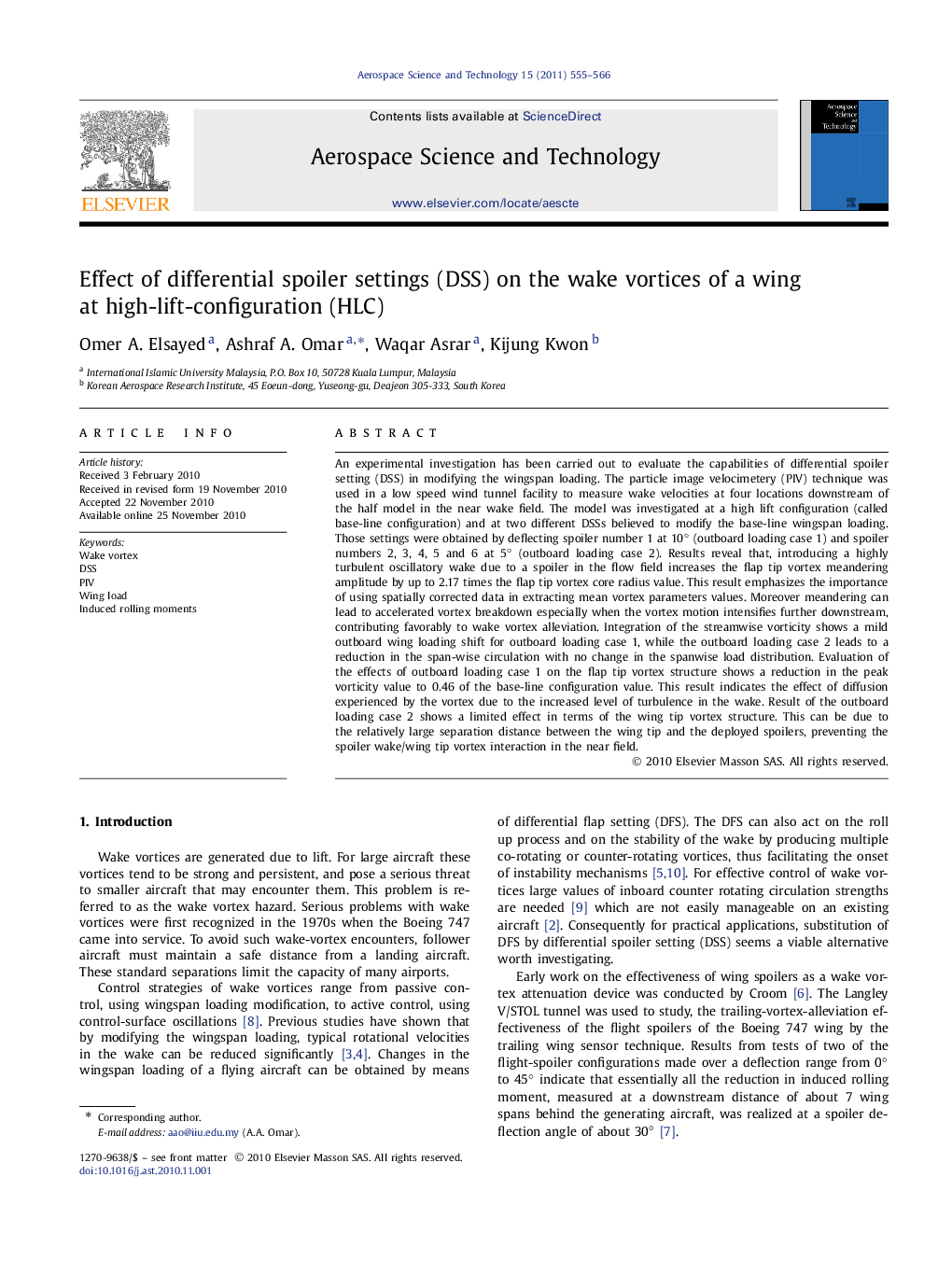| Article ID | Journal | Published Year | Pages | File Type |
|---|---|---|---|---|
| 1718466 | Aerospace Science and Technology | 2011 | 12 Pages |
An experimental investigation has been carried out to evaluate the capabilities of differential spoiler setting (DSS) in modifying the wingspan loading. The particle image velocimetery (PIV) technique was used in a low speed wind tunnel facility to measure wake velocities at four locations downstream of the half model in the near wake field. The model was investigated at a high lift configuration (called base-line configuration) and at two different DSSs believed to modify the base-line wingspan loading. Those settings were obtained by deflecting spoiler number 1 at 10° (outboard loading case 1) and spoiler numbers 2, 3, 4, 5 and 6 at 5° (outboard loading case 2). Results reveal that, introducing a highly turbulent oscillatory wake due to a spoiler in the flow field increases the flap tip vortex meandering amplitude by up to 2.17 times the flap tip vortex core radius value. This result emphasizes the importance of using spatially corrected data in extracting mean vortex parameters values. Moreover meandering can lead to accelerated vortex breakdown especially when the vortex motion intensifies further downstream, contributing favorably to wake vortex alleviation. Integration of the streamwise vorticity shows a mild outboard wing loading shift for outboard loading case 1, while the outboard loading case 2 leads to a reduction in the span-wise circulation with no change in the spanwise load distribution. Evaluation of the effects of outboard loading case 1 on the flap tip vortex structure shows a reduction in the peak vorticity value to 0.46 of the base-line configuration value. This result indicates the effect of diffusion experienced by the vortex due to the increased level of turbulence in the wake. Result of the outboard loading case 2 shows a limited effect in terms of the wing tip vortex structure. This can be due to the relatively large separation distance between the wing tip and the deployed spoilers, preventing the spoiler wake/wing tip vortex interaction in the near field.
